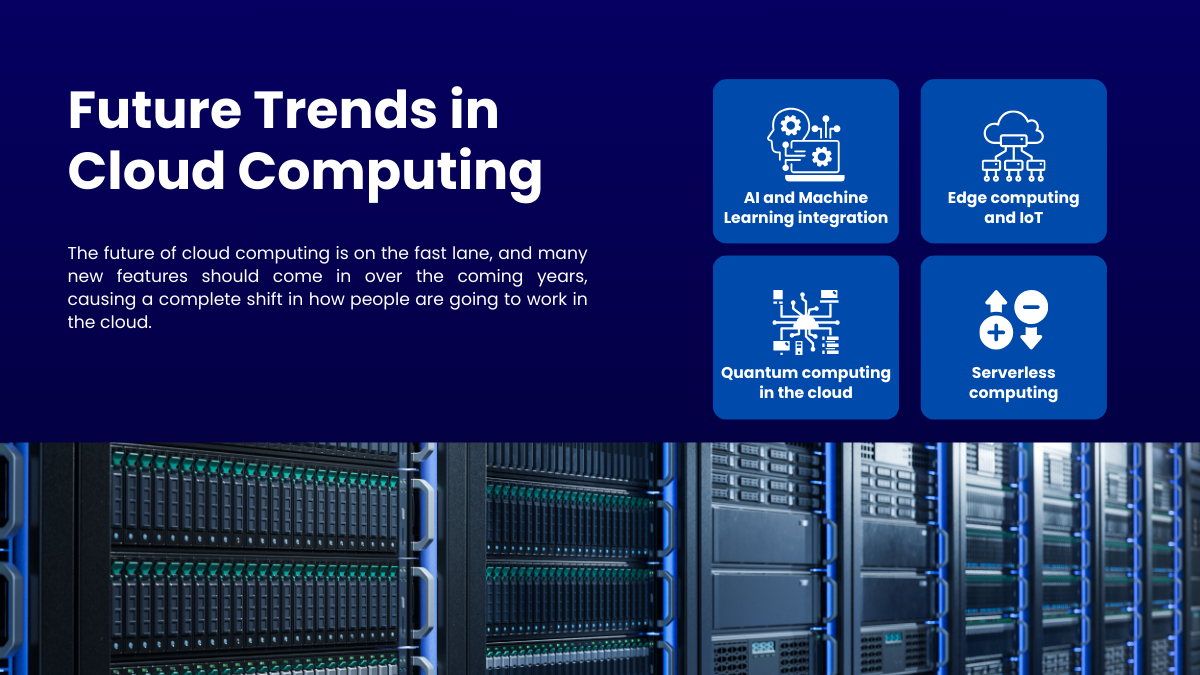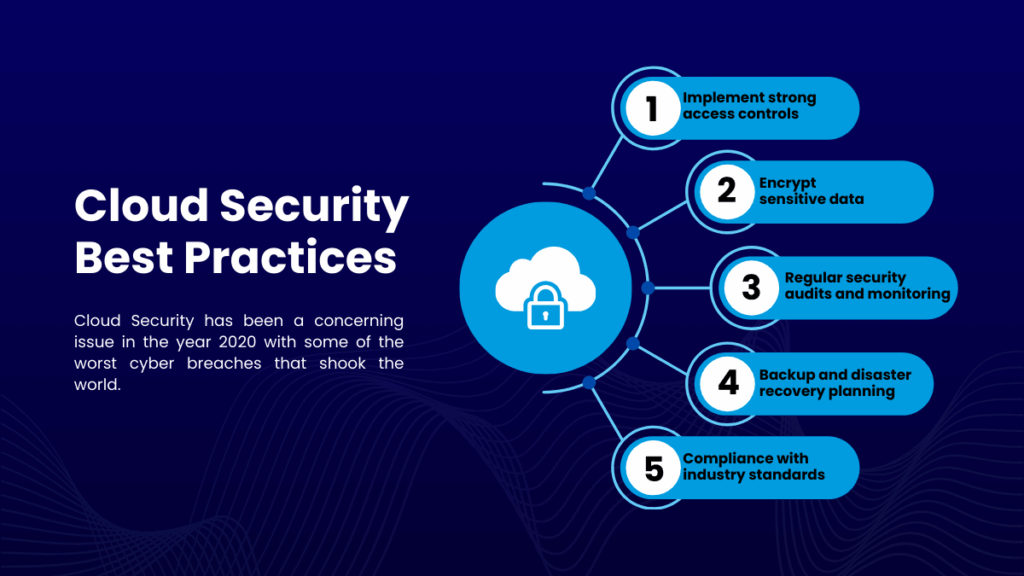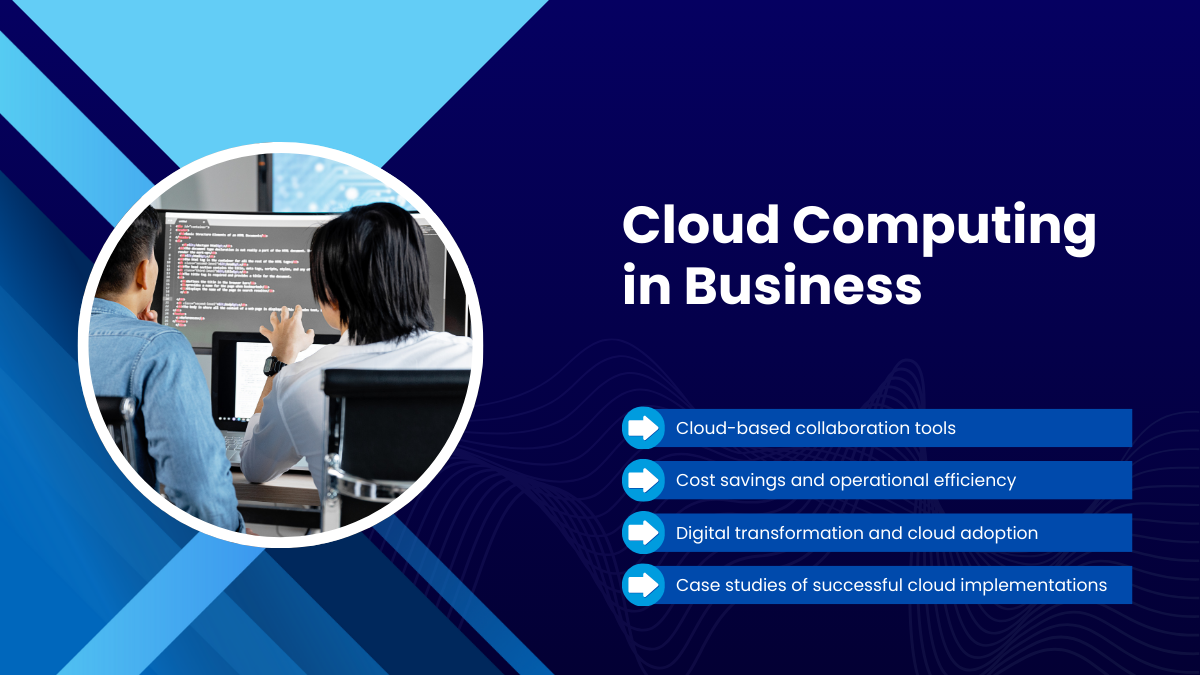
The Future of Cloud Computing 2025-2030: Trends and Predictions
Ever since the then Google CEO Eric Schmidt coined the term ‘Cloud Computing’ in 2006, the field of data management has seen great advancements. Cloud computing (CC) not only changed the way how businesses handled huge amounts of data; it also remodeled how people consumed online services; two such fine examples being Gmail and Google Drive, where you can access your data from any computer with internet access.
Despite some experts disapproving of Cloud Computing, terming it as a “rebranded version of thin client’ computing, which is basically a device that uses a server to perform functions; there is no denying the fact that Cloud Computing is growing at an exponential rate. Evidently, the market cap of public cloud services in 2025 grew from $209.2 billion to $246.8 billion, and expected to reach $383 billion by 2030.
So what do these figures say?
It is that the Cloud Computing is certainly being adopted more and more, and hence, seeing new and better developments. And despite seeing some of the biggest cyber-attacks, 2020 has paved the way for new improvements in the field of Cloud Computing in the upcoming year.

Faster and Efficient Cloud Computing
Because Cloud Computing relies heavily on speed for data exchange, a bandwidth upgrade is a must for better results. In November 2014, Megafon and Huawei announced that 5G network would be available for use by the end of 2017.
Apart from this, Edge computing is just around the corner. Edge computing is a mesh network system that stores and processes data locally at the device of origin. Hence, the major application of Edge computing is in Internet of Things (IoT) devices, which need an efficient data processing system that is fast. Edge computing fulfils this requirement of IoT devices by processing the data within the IoT devices, so that the data doesn’t have to be sent far to a central data server.
We know that AI and Machine learning are two of the most promising fronts in the field of digital technology, and it wouldn’t be a wonder to witness cloud computing reach.
Decentralized Computing
Since the advent of Blockchain in 2008 with the introduction of Bitcoin, innovators have constantly been trying to harvest the full potential of Blockchain technology. One of biggest features of blockchain technology is that it allows one to create and manage most of their solution’s infrastructure through shared or decentralized resources. And for cloud computing, this is a huge advantage.
Currently, we have blockchain-based data processing solutions like iExec, Rockchain and more, which focus extensively on processing data using cloud technology. iExec harnesses power from providers who can afford to spare unused computational power and builds a virtual cloud for computing high volumes of data for decentralised apps.
Similarly, Rockchain also provides high-performance cloud computing along with access rights management.
Cloud Security
Cloud Security has been a concerning issue in the year 2020 with some of the worst cyber breaches that shook the world. Attacks like US Voters’ information breach, WannaCry ransomware, CrySis and more, showed us that we need impenetrable security in the field of Cloud Computing. Thus, in the year 2018, developers are most likely going to focus on cloud security.

Sustainable Computing
According to a report created by Global E-sustainability Initiative, published by Microsoft, mass adoption of Cloud Computing would bring down the Green House Gas emissions by 4.5 Megatons and decrease IT sector carbon footprints by 2%.
The report makes it quite apparent that there is a dire need for us to ditch and switch from local servers to cloud computing. In the wake of this, we may see a large number of businesses migrating from local to cloud servers.
Cloud computing is an emerging form of technology which will deliver an entire range of computing services on the internet-for example: Application services, Network services, Database services, Server services, Analytical services and Data science services as well as Storage services. Different devices and applications can connect with each other over the internet, so making them more effective in managing data and storage.
The three basic components of cloud computing include cloud software as a service, cloud infrastructure as a service, and cloud platforms as a service:
- Cloud Software Service: Cloud software is an online application package, i.e., programs that offer features via the internet from a SaaS provider. Users do not have to think about the infrastructure or maintenance issues with this software. Users will access the software’s features by means of an internet browser.
- Cloud-Based Infrastructure: Cloud-based infrastructure is what lies under every modern cloud IT service because it is only provided by a third-party service provider, including virtual networking features, computing services, and data space. The cloud-based infrastructure provided facilities for the users to run applications in an environment controlled by better flexibility in accessing the resources and a good venue to store their data.
- Cloud-Based Platform: Cloud platforms is also recognized as Platforms as a Service wherein one can be provided a ready-to-use platform to deploy and manage the application. It not only makes the process effective but also prevents the users from headaches regarding maintenance, patching, and capacity management.
Cloud Computing through Artificial Intelligence
The introduction of artificial intelligence (AI) is a game-changer for cloud computing. Its effects are felt in the adoption of serverless computing, better methodologies for data handling, and numerous other processes in data centres. Here are significant areas where AI will be transforming cloud computing:
-
Data Analytics
AI changes cloud computing by providing superior data analytics. They would even help organizations uncover more profound insights into the business workflow, aspects of customer behavior, and other attributes. Advanced AI functionality has been included in many cloud platforms, encouraging them to reap more efficiency and reliability.
-
Automation of Processes
AI will come with many automated redundant processes, such as data management in the life of a cloud provider and increase resource efficiency. AI will also predict trends, recognise patterns, and, more efficiently, detect anomalies and improve cloud computing in several other ways.
-
User experience
The most important change brought to the digital experience of users is the incorporation of AI. It introduced personalised recommendations, chatbots, and many other processes that have significantly improved the overall computing experience. It also eliminates human errors while providing better support to customers, resulting in customer satisfaction.
Benefits of Cloud Computing
Cloud computing has transformed operations for many organisations across the industry. It has not only eased their business operations but has also helped them combat many traditional challenges. The fundamental factor behind the explosive growth of cloud computing today is the lack of need for organisations to make large investments while performing business activities online.

Some of the most significant benefits of cloud computing are:
- Simplified IT Infrastructure Management: Cloud computing has made it easy for every business to run its IT infrastructure. Cloud computing makes everything easy. The employees need not worry about security patching, hardware maintenance, and application updates. It also makes the building of cloud-based applications easy, as employees can leverage superior resources with connected network equipment.
- Scalability: Scalability is one major reason that has influenced many organizations to transfer their IT infrastructures in the cloud. In this manner, organisations can gradually expand their business without having to invest heavily in expanding their infrastructure to accommodate the increased load on applications or services. It allows developers to add features and services to the application without worrying about the size of the infrastructure.
- Very Cost-Effectively: Cloud computing has been able to reduce capital expenses of businesses owing to no upfront capital investment in hardware and others. Cloud services provide their users an efficient subscription model for paying only for those resources that are actually needed. Basically, they need not be paying for any physical computing, networking, or storage, which has really assisted them in holding down operational and upgrade costs.
- Very Flexible: Flexibility is one of the main reasons why cloud computing has gained so much acceptance. It allows organizations, employees, and users to access applications, services, and data from any corner of the globe with Internet connectivity.
- Disaster Recovery: The cloud has helped organizations conquer great heights of disaster recovery management in a sense and has really assisted organizations in backing up crucial data through SaaS. Disaster recovery system is almost made synonymous with every cloud vendor due to the fact they have proper backup procedures in place, whereby organizations can get back to their feet after such a security disaster. Thus, impeding the security of its virtual environment and enabling smooth business continuity.
- Safety and Compliance: With cloud computing, your organization gains comprehensive security. It helps back up the data and recovering it for full functionality.
From 2025 to 2030-cloud computing will have a higher degree of acceptance which is being realized by many organizations benefiting from it. As an owner of the business, you must not be far away from visions relating to the future of cloud computing from 2025-2030.
Conclusion
The future of cloud computing is on the fast lane, and many new features should come in over the coming years, causing a complete shift in how people are going to work in the cloud. It is a simple yet powerful platform for enterprises to store data, develop, and conduct other business operations.
As indicated in the report from Gartner, such a shift is the next form of computing in this modern age. Cloud services are going to be in greater demand in the future, and the application of artificial intelligence and machine learning will take that entire experience to a whole new level. This article covers everything one would need to know in terms of the future of cloud computing.

